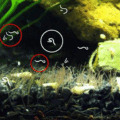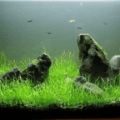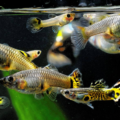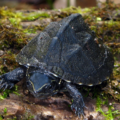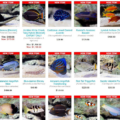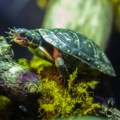Looking for a small, low-maintenance turtle? The Stripe-Necked Musk Turtle is perfect if you have a small setup or a special love for aquatic reptiles.
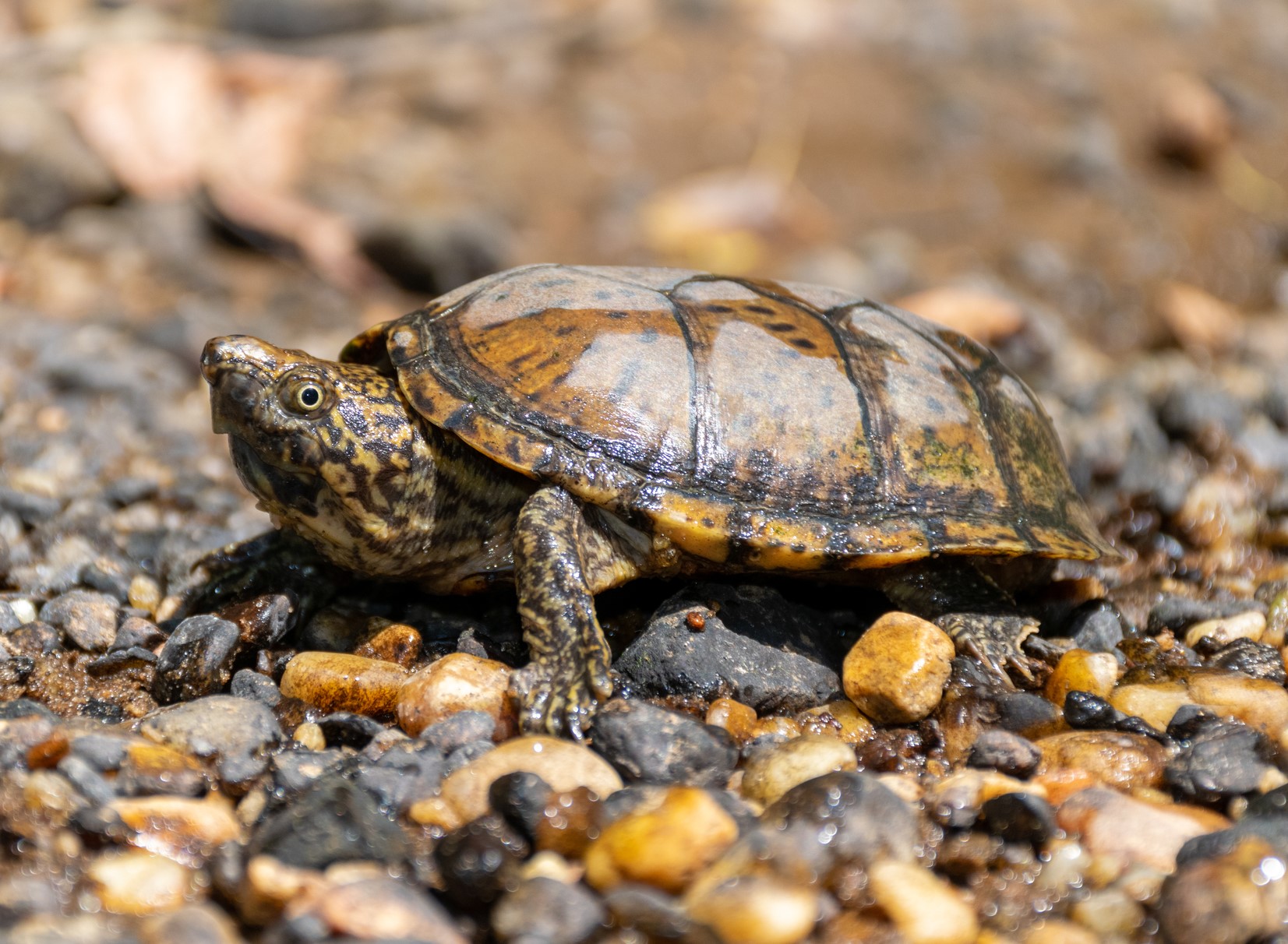
Introduction
The stripe-necked Musk turtle is a small aquatic turtle species that belongs to the musk turtle family. In fact, it’s a subspecies of the loggerhead musk turtle. It gets its name from the bold yellow or cream-colored stripes that run down its neck.
Sternotherus minor peltifer‘s traits, especially its personality and charm in smaller setups, is why it is so popular among hobbyists. It’s a cute compact, hardy and low maintenance turtle.
If you’re looking for a turtle that doesn’t need a massive tank and still brings personality and charm, this turtle might be the one for you.
Author’s Note: Check out our post The 14 Types of Freshwater Turtles for even more great semi-aquatic pets!
In this guide, you’ll find the full Stripe-necked Musk Turtle profile that you need to get started!
Tank Setup for Stripe-necked Musk Turtles: Keep It Simple but Efficient
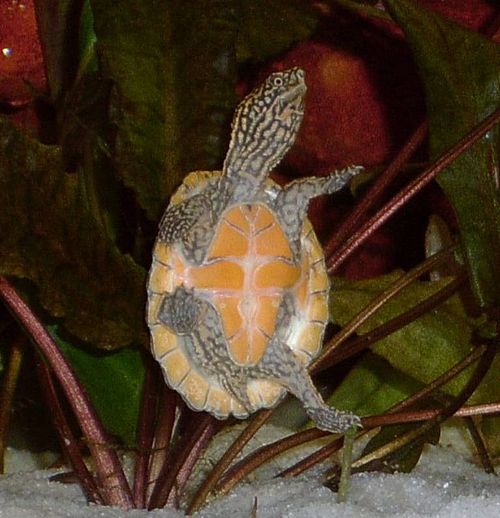
Designing the ideal Stripe-necked Musk Turtle enclosure is one of the most important things you need to do.
Tank Size
Setting up a tank for your turtle doesn’t have to be complex. Start with a minimum of 20 – 30 gallons per adult turtle, but bigger is always better if you have the space.
Water Parameters
For Sternotherus peltifer tank design, moderate water depth is best. These turtles aren’t messy eaters like some other species, but a good filter will cut down on maintenance. Go for a canister filter or an internal one with biological media like any of these 7 Best Filters for Your Turtle Tank, which is an in-depth guide on the best turtle tank filtration systems.
| Temperature | 75 – 80°F Water | 80 – 90°F Basking Area |
| Condition | Dechlorinated |
| PH | 6.0 – 8.0 |
| Depth | Adult, 6 – 12 in | Baby, 3 – 4 in deep |
Author’s Note: Knowing Why your turtle tank water turns green? (Cause & Fixes) will be useful in the upkeep of your turtle’s enclosure.
Substrate & Decor
Use smooth gravel or sand as the substrate, and add driftwood, smooth stones, and caves for hiding spots. They love exploring and wedging themselves into tight spaces, so be sure that your decor is turtle-safe and can’t trap them.
This is where your let your curiosity shine. Don’t be afraid to design a tank that matches your personality. Just be sure that their enclosure is secure and safe!
Basking Zone
A basking spot for aquatic turtles keeps your pet in good health, so don’t forget a dry basking area with a flat surface and UVB lighting. Even though they don’t bask frequently as other turtles like red eared sliders. For a more in-depth guide on choosing the right heat and light combo checkout our post below,
Distinctive Behavior and Temperament in Aquariums
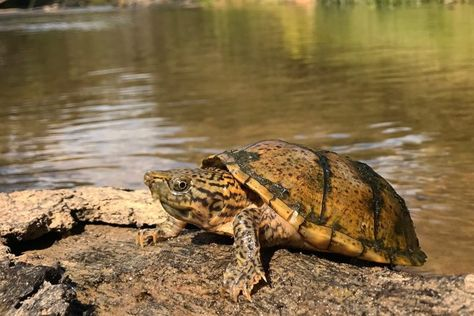
In the tank, Sternotherus minor peltifer behavior tends to be laid-back but inquisitive. These turtles often hide under rocks or driftwood, poking out evry now and then to explore.
Although they are shy at first, over time, they become more interactive and display their spunky musk turtle personality traits. These small turtle habits are what makes them so fun to watch.
Author’s Note: Check out the 8 Best Toys for Pet Turtles to Play With for more ways you can interact with and stimulate your pet turtle.
Don’t let their size fool you, though; they can be feisty. Some may use their musk glands to release a strong odor when stressed.
Stick to one turtle per tank unless you have plenty space and hiding spots to reduce tension.
Can Stripe-necked Musk Turtles Live with Others?

The Stripe-necked Musk Turtle is usually best kept solo as mentioned. In confined tanks, they may be territorial, especially males. If you’re thinking of adding tank mates, here are some tips for you:
- Use a large enclosure with visual barriers and multiple basking zones to minimize conflict.
- Stripe-necked Musk Turtle tank mates can include other musk or mud turtles. But keep a close eye on their interactions.
- When housing small turtles, take signs of biting, chasing, or hogging basking spots seriously as these signs can lead to serious injury or illness.
Feeding Stripe-necked Musk Turtles: Protein-Rich, Balanced Diet
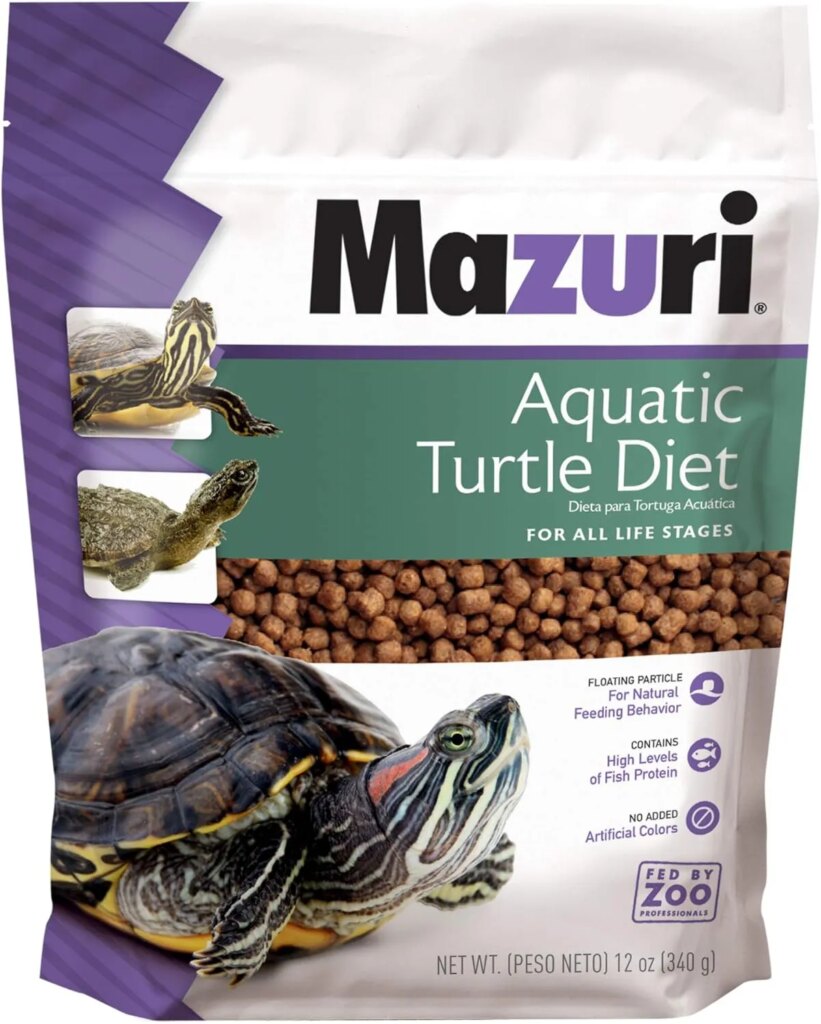
Found On Amazon
Stripe-necked Musk Turtles lean towards a carnivorous diet, and their meals should reflect that. Most keepers stick with high-protein commercial turtle pellets as the base, and then add carnivorous turtle food options like insects, snails, and earthworms.
Author’s Note: Check out our Complete Guide To Turtle Food: What To Feed And Why It Matters for detailed food recommendations!
Feeding Routine
Feed juveniles daily and adults 3 – 4 times a week. Overfeeding is a common mistake with small turtles that you don’t want to make. If you let them, they will eat a lot, and this will make them gain weight and pollute their water. So, give food in small portions, and remove leftovers to keep the water clean.
And if you are struggling with a turtle that just won’t eat check out our post on the 8 Reasons Why Your Turtle Won’t Eat (Tips & Fixes) for causes and fixes.
Calcium Intake
Feeding Sternotherus peltifer with calcium supplements will help strengthen your turtle’s shell. So, don’t forget to sprinkle calcium powder on food weekly or include cuttlebone in the tank to support strong shell development. This musk turtle diet guide will make your Stripe-necked Musk Turtle nutritionally balanced.
Breeding Traits and Hatchling Care
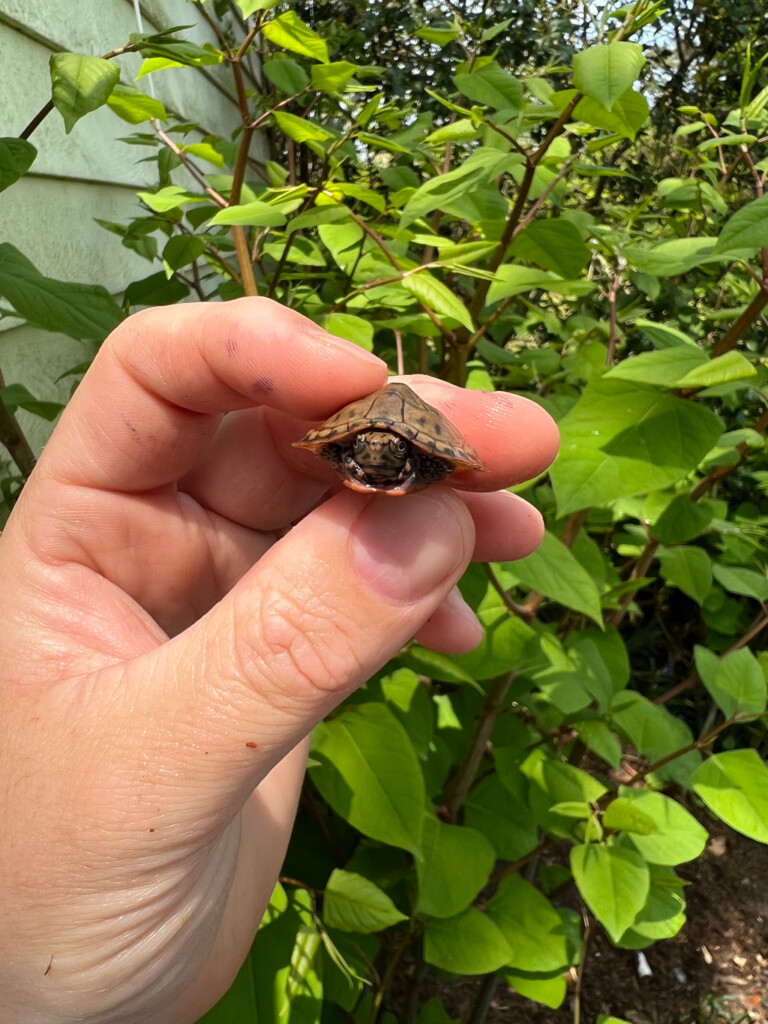
Use this hatchling care guide to create the right conditions for baby Stripe-necked Musk Turtles.
Mating Season
Stripe-necked Musk Turtle breeding is usually between spring and early summer. During courtship, males often become more active, nudging females and displaying physical cues.
Nesting Area
To support Sternotherus egg laying, design a moist, sandy nesting area. It may be either a land section in the tank or a separate nesting box.
Hatchling Tips
After hatching, hatchling care involves warm, shallow water, gentle UVB exposure, and a protein-rich diet. Start with tiny worms or cut-up insects, and avoid aggressive tank mates.
Health Risks and How to Avoid Them
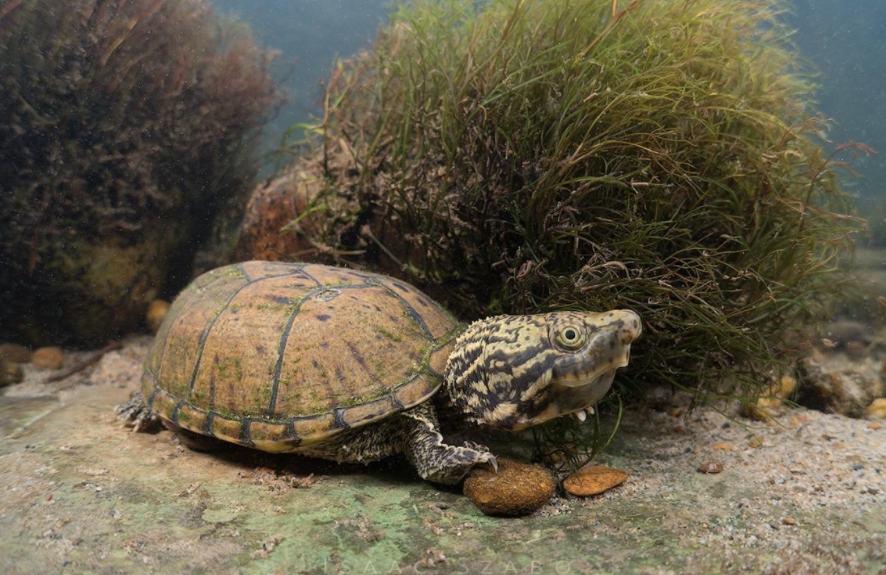
Although they’re hardy, Stripe-necked Musk Turtles are not immune to issues and can still face health problems.
Some common problems include shell rot, fungal infections, and respiratory issues. They are often caused by poor water quality or injuries. These musk turtle health tips can help spot issues before they become serious.
Preventative Care
Most aquatic turtle care problems can be avoided with care and consistent maintenance.
- Maintain water temperature and quality
- Feed a balanced diet
- Maintain a proper basking setup
- Make sure the decorations are smooth and not choking hazards
Warning Signs
Some signs of illness include wheezing, sluggishness or puffy eyes. Check your turtle’s shell and skin regularly for any signs of white patches or swelling. Sternotherus peltifer disease prevention starts with good observation. Catching problems early makes all the difference.
If your turtle seems off, you should get it checked out by a reptile vet.
Lifespan and Commitment: What to Expect

The Sternotherus peltifer lifespan is 30 to 50 years as a pet with proper care. They don’t require as much space as larger species, but they still need a clean, well-maintained tank and regular feeding.
Maintenance Schedule
Long-term turtle care includes weekly water changes and monthly filter maintenance to help keep the tank healthy.
Handling Notes
They’re not cuddly pets, and they generally don’t like being handled much, but they’re fun to watch. So, unless it’s necessary, let them be.
Growth Expectations
Growth is slow and steady. Most adults reach about 4–5 inches, which makes them ideal for small to medium-sized enclosures.
With this small turtle species’ longevity, you’re guaranteed many years of quiet companionship.
Conclusion
If you’re in the market for a small, hardy, and charming turtle, the Stripe-necked Musk Turtle checks all the boxes for keepers who want a beginner-friendly musk turtle that doesn’t require a massive setup.
Although they’re relatively easy to care for, remember they still need clean water, warmth, and a good diet.
For anyone looking for a low-maintenance, personality-filled aquatic pet, this Sternotherus peltifer summary says it all. Use this Stripe-necked turtle care overview as your go-to guide, and leave comments below!

